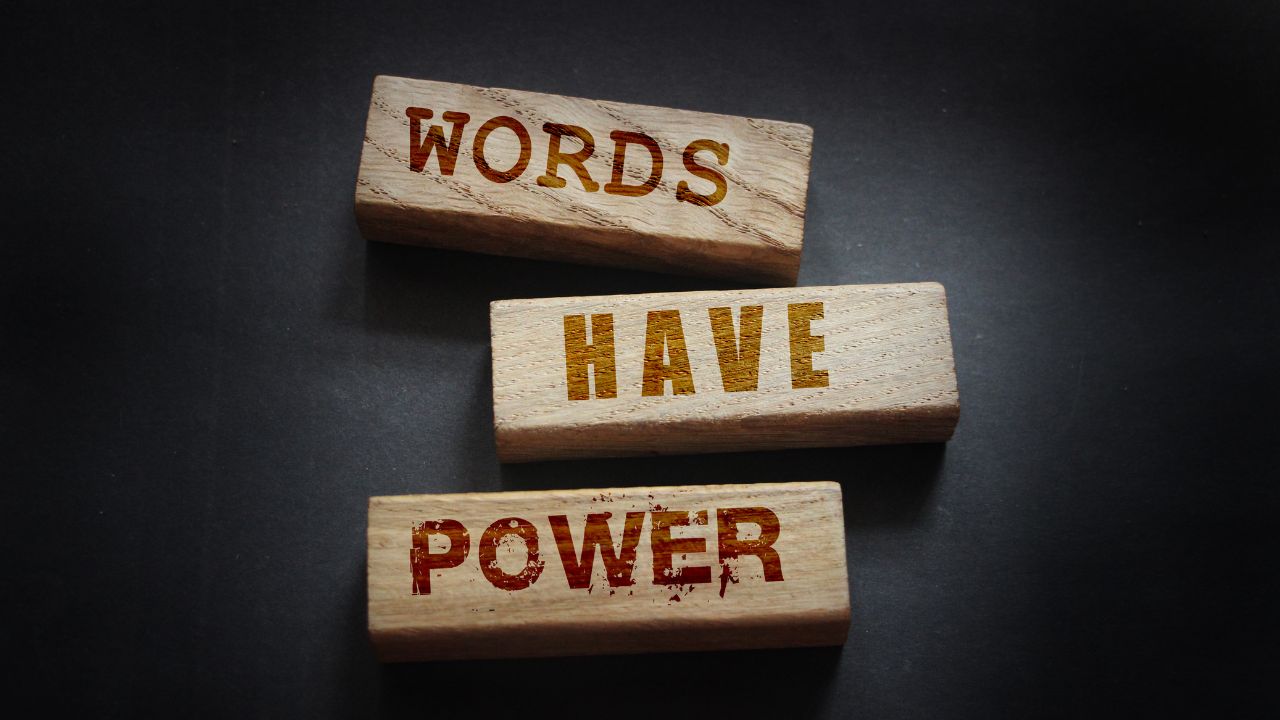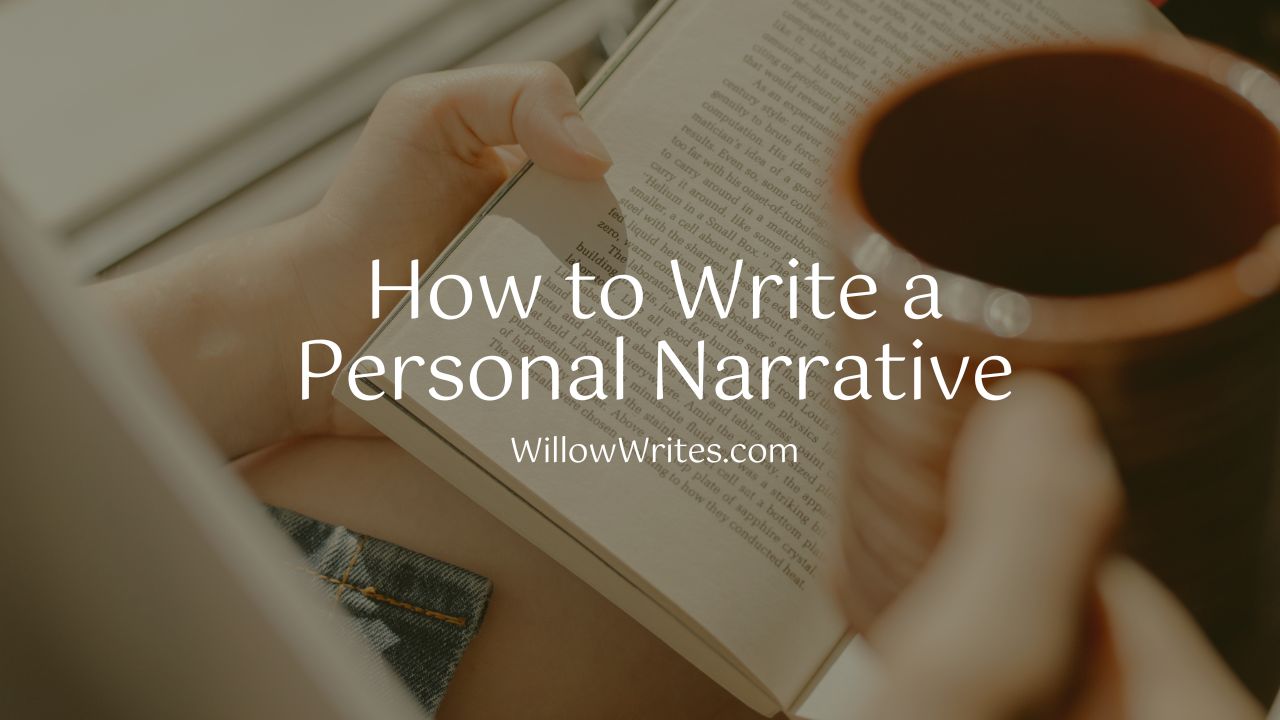Craft compelling copy that captivates your audience with the art of “pointed copywriting.” Master the techniques of crafting impactful messages and engaging your readers effectively. Unlock the secrets to sharpening your words and making a lasting impression with precision and finesse.
Meet Julia, an aspiring copywriter with a love for powerful words. She dreams of writing messages that stick with the reader. Yet, she often struggles to connect with her audience. Julia knows writing is more than just words on a page. She aims to master pointed copywriting.
Pointed copywriting helps writers like Julia make an impact. It uses strategic content creation and persuasive writing to grab attention. With it, Julia can craft copy that stands out to her audience.
Julia learns the importance of choosing every word wisely in pointed copywriting. She picks language that speaks directly to her audience, making her communication clear and effective.
She also learns about SEO-friendly copywriting. This means optimizing her content for search engines while keeping her message strong. By using keywords well, she ensures her audience can find her work.
Through much practice, Julia has improved her pointed copywriting skills. She uses engaging headings and subheadings. This makes her content easy to follow and keeps readers interested.
Now, Julia writes compelling messages with confidence. Her words are sharp, impacting her audience across websites, social media, and marketing campaigns. Her audience now looks forward to what she has to say.
Key Takeaways:
- Pointed copywriting allows writers to create effective messaging and engage their target audience.
- Strategic content creation and persuasive writing techniques are essential in crafting targeted copy that resonates with readers.
- Compelling language and precise communication are key elements of pointed copywriting.
- SEO-friendly copywriting ensures that content is easily discoverable by the target audience.
- Engaging headings and subheadings make the information more digestible and help guide readers through the content.
The Role of Copywriting in Startups
Copywriting is critical in startups. Here, everyone wears many hats, from product manager to customer support. They all help create messages that pack a punch. While big companies have dedicated writers, startups do it themselves. This ensures they connect well with their audience.
Good copy can make a product stand out. By sticking to a clear tone and writing rules, startups can touch hearts. They become more than just a product to their customers.
Adding copywriting to the design process can make a big difference. It shapes how users feel about a product from the start. When design and copywork as one, products meet customer needs better.
Every word a startup uses matters a lot. From hello messages to error alerts, each word should leave a mark. The right words show what a product is all about. They also make people want to keep using it.
Startups need a brand voice that mirrors who they’re talking to. Choosing the right words and style makes customers feel understood. This builds trust and keeps them coming back.
Collaboration between Design and Copywriting

Designers and writers should team up. This helps everyone get the vision right. And it makes for designs that highlight the copy, and vice versa.
Product managers, support folks, and designers need to work together. They ensure every bit of the product shares the same vibe. This makes the whole product feel united and true to the brand.
Getting writers in early helps avoid do-overs. It means the product speaks to users from the get-go.
“For messaging that hits home, product managers, support teams, and designers need to collaborate. Together, they make sure everything about the product is on point.”
By including copywriting in the design phase, startups can stand out. Good copywriting is key for a product that connects and impresses. It helps startups build experiences that draw people in.
Valuing great copy and teaching teams to write can lead startups to win. Making messaging a big deal throughout the product’s life wins loyal fans. It’s how startups grow.
Copywriting is a must for startups wanting to make an impact. Seeing its worth lets startups use words to boost their brand and reach goals. It’s how they move forward and shine.
The Importance of Clear Language
Clear language makes good copywriting, especially in tough times. It should be easy to understand and use a product, even during problems. Clear, friendly words improve how users feel. They help everyone, including those who don’t speak English well or have trouble reading.
Writers should pick simple words and skip the hard jargon. This makes sure everyone gets the message. Using short sentences and sections makes reading faster. Plus, a friendly chat style makes readers feel welcome and involved.
“The language used in copywriting should be like a clear pathway that guides users through the product experience, even in stressful situations.”
Good language choices boost user involvement and happiness. During hard times, like errors or urgent tasks, clear words can calm and guide users. This shows we understand and support them when they need it most.
It also helps people who are learning English and those who find reading hard. By keeping words simple and sentences straightforward, content reaches everyone. This welcoming approach builds positive experiences, trust, and loyalty with diverse users.
Zappos is a great example of using clear talk. They focus on easy and friendly help to give great customer service:
“Hi Maya! We’re so sorry to hear that you’re experiencing difficulties with your order. Our team is here to help! Could you please provide us with your order number so that we can investigate and resolve the issue for you? Thank you for your patience and understanding!”
In conclusion, clear language is key in good copywriting. It improves the experience, especially under pressure, and reaches a wide audience. With simple words, brief sentences, and a friendly tone, writers make sure their message is clear to all. Clear language leads to better engagement, aids non-native speakers, and makes reading easier for those with difficulties.
Concise Writing for Maximum Impact
Concise writing is essential for impactful messages. Long sentences and big blocks of text can make readers lose interest. Copywriters should focus on shorter sentences for easier reading and skimmable posts. A study shows online readers have an 8-second attention span, so it’s crucial to capture their interest fast (source).
“Less is more”
Writers should keep sentence length under 20 words to hold attention. This makes content easy to digest and keeps it from being too much for readers. Cutting extra words or phrases makes the message more concise and powerful.
Let’s see the difference between two examples:
| Original Sentence | Concise Version |
|---|---|
| “In order to achieve maximum impact, it is crucial for writers to focus on concise writing and avoid using long, meandering sentences that can lose the reader’s interest.” | “To maximize impact, writers must use concise sentences that engage readers.” |
The impactful messaging in the concise version is straightforward and simple. This shows how avoiding extra words can capture and keep an audience’s interest.
Moreover, concise writing allows for skimmable posts. Readers can quickly get the main points without reading every word (source).In today’s world, people appreciate content they can easily scan for what they need.
Using shorter sentences, bullet points, and subheadings can make content skimmable. Breaking text into smaller parts with headings helps guide the reader.
In summary, concise writing makes messages hit harder with readers. Keeping things brief ensures readers stay focused. Making posts easy to read improves how people feel about the content. By being concise, writers can truly make their words count.
The Power of Visuals
Visuals boost both content readability and user involvement. Studies show that including images can draw 94% more views. This makes visuals crucial for attracting and keeping readers interested.
Using pictures breaks up text blocks, adding visual breaks. This makes the content look nicer. It’s key to pick relevant, high-quality images that match what you’re saying.
Websites like Unsplash and Pexels provide many royalty-free images. This helps writers pick the perfect images for their work without copyright issues royalty-free images. These images not only look great but also help tell stories, showing tough ideas and feelings. By using images well, writers grab the reader’s interest and make reading more fun content readability, engagement.
Giving proper credit and links to images is very important. This shows respect to the creators and follows copyright laws. Clear image credit shows good writing ethics and makes your work more trustworthy. Respecting photographers and designers helps build good partnerships and promotes the use of royalty-free images royalty-free images.
Adding visuals to writing greatly improves the experience and keeps readers engaged. A great photo, infographic, or drawing can truly capture readers’ attention. By selecting relevant and high-quality images, writers can make their content stand out and give readers a memorable and visually striking experience.
Maximizing Readability with Headings and Subheadings

Headings and subheadings help make your content easy to read. They act as signs, leading readers to what they seek. Using them well structures your content, guiding your audience.
The Importance of Headings
Think of headings as your content’s roadmap. They show what’s ahead and guide readers through your text. A good heading mirrors the content beneath it offering a peek of what to expect.
Keep SEO in mind when making headings. Use keywords that match your section’s content. This helps search engines grasp your page’s context.
Subheadings for Detailed Information
Headings give an overview whereas subheadings dive deeper. They simplify complex ideas, making your content easier to skim. Readers can find what they need quickly.
Make sure your subheadings are short and clear. Use action words or questions to engage and motivate your readers to keep going.
Organizing Long Blocks of Text
Long text can overwhelm readers. To help, break it up with headings and subheadings. This adds visual breaks and makes your content easier to read and understand.
Pro Tip: Use a hierarchy of headings and subheadings to structure your content and guide readers through the main points. This improves the skimmability and flow of your copy.
Using headings and subheadings also boosts the user experience. It lets readers find what they want fast.
Adding relevant images can also make your content more appealing and engaging for your audience.
Transition Sentences for Smooth Flow
Transition sentences help make content flow well and connect ideas clearly. They use phrases like “with that in mind” to move smoothly between points. This keeps the reader interested.
Having a good set of transition phrases makes writing more coherent and engaging. These sentences are like bridges, moving the reader smoothly from one thought to another. They help the reader stay on track easily.
Smooth content keeps readers hooked. It avoids sudden jumps that can distract or confuse. A good transition sentence signals that a new point is coming.
“With every transition sentence, writers have the opportunity to keep the reader invested in the content. These sentences provide the necessary connective tissue that ties the different parts of an article or blog post together.” – enchantingmarketing.com
Logical connections in writing are key. They help readers understand complex ideas more easily. Transition sentences guide the reader through the content smoothly and logically.
Choosing the right transition word or phrase is crucial. Different transitions have different functions, like adding info or contrasting ideas. Using them well makes the topic clearer and more detailed.
Types of Transition Sentences:
- Adding Information: Transition sentences adding more info build on the earlier points. They give more context and help the reader understand better.
- Contrasting Ideas: Transition sentences with contrasting ideas present different or opposing views. They make the discussion more balanced and complete.
- Emphasizing a Point: Transition sentences that emphasize a point stress the importance of an idea. They focus the reader’s attention on the main message.
- Summarizing Key Points: Transition sentences that summarize key points recap the main ideas. They give a quick overview, reminding the reader of what’s important.
Using transition sentences well can greatly improve content. They make the writing flow, engage the reader, and present ideas in a clear order. A good transition sentence can turn disjointed writing into something that captures the reader’s interest.
| Benefits of Transition Sentences | Examples |
|---|---|
| Enhances the flow of the content | “In addition to transitional phrases, writers can also use transitional words to create seamless connections between paragraphs.” |
| Maintains reader engagement | “With that in mind, let’s explore some practical techniques for incorporating transition sentences into your writing.” |
| Creates a logical progression of ideas | “The bottom line is, transition sentences are a powerful tool that can elevate your writing to new heights.” |
In conclusion, transition sentences are a crucial tool for making content cohesive and smoothly flowing. They build logical links between ideas, making it easy for the reader to follow along. Learning to use them effectively can help writers engage their audience more deeply.
Creating a Swipe File for Inspiration
A swipe file is a great way for copywriters to find inspiration. It’s like a collection of writing pieces – think transition phrases, headlines, and calls-to-action. Having a personal swipe file means writers can look back at their best work. They can use it to make their new writing even better. There are also online resources with free swipe files for those just starting out.
Transition Phrases
Using the right transition phrases keeps your writing smooth and easy to follow. Here are some transition phrases that can make your copy better:
- With that in mind
- On the other hand
- Furthermore
- In addition
- Moreover
Headlines
Headlines grab the reader’s attention and make them want to read more. The best headlines are short, interesting, and show what the reader will get. Below are some formulas for writing great headlines:
- The Ultimate Guide to [Topic]
- [Number] Ways to [Achieve Desired Result]
- Unlock the Secrets of [Topic]
- Discover the Power of [Product/Service]
- [Number] Tips for [Specific Audience]
Calls-to-Action
Having a strong call-to-action (CTA) encourages readers to do something. It could be signing up for a newsletter or buying a product. A good CTA makes a big difference in getting people to act. Here are examples of powerful CTAs:
Start your free trial today!
Shop now and save 20%!
Join our community and get exclusive access!
Book your appointment now!
Power Words
Power words can make your writing more exciting and appealing. They help to spark emotions and keep readers interested. Here are some power words you can include in your copy:
- Unleash
- Revolutionary
- Transform
- Empower
- Illuminating
Using elements from your swipe file can really improve your writing. It adds depth and makes your work stand out. Always adjust the language to match your brand’s voice. Keeping a swipe file is a smart way to always have inspiration close by.
| Swipe File Examples | Categories |
|---|---|
| Headline: “Discover the Secrets to Achieving Success in 5 Simple Steps” | Headlines |
| Quote: “Success is not the key to happiness. Happiness is the key to success. If you love what you are doing, you will be successful.” – Albert Schweitzer | Quotes |
| Call-to-Action: “Don’t miss out on this limited-time offer. Buy now and enjoy the benefits!” | Calls-to-Action |
| Transition Phrase: “In conclusion, it is evident that the benefits outweigh the risks.” | Transition Phrases |
Simplifying Language for Readability
Writing simply and meaningfully boosts your copy’s readability. Avoiding wordy language and choosing plain English helps. This makes info accessible and easy for readers to digest. In digital spaces, where people prefer quick reads, simplicity grabs and keeps attention.
Plain English means using clear, easy language. It avoids hard words or jargon. This method makes sure more people can understand your copy. This includes those not fluent in English or those who find reading tough. The aim is to share your message clearly, without confusing readers.
The Hemingway Editor is a great tool to simplify your writing. It points out long, complicated sentences. It then suggests how to make them shorter and clearer. Using this tool helps keep your writing interesting and clear.
Benefits of Simplifying Language
Simplifying language makes your copy easier to read:
- Better understanding: Simple language means readers get your message faster.
- Keeps readers interested: Easy language helps readers stay with you. They don’t get lost or bored.
- Reaches more people: Plain English can be understood by a wide audience. This includes people with different levels of English skill.
- Saves time: Readers quickly get the main points. They find the info they need faster.
Fluff-free writing is key in copywriting. Aim for a clear and to-the-point message to have a bigger effect.
Focus on simplicity and plain English to connect with your readers. This ensures your copy is clear, fun, and gets your message across.
Example of Simplified Language:
Before: Our state-of-the-art product leverages cutting-edge technology to provide users with an immersive and unparalleled experience.
After: Our advanced product offers a unique and immersive experience using the latest technology.
Example of Simplified Language:
Before: Ensure to utilize our comprehensive range of features and functionalities to maximize your productivity and achieve optimal results.
After: Use our wide range of features to boost your productivity and achieve better results.
Remember, simplifying language helps make your copy understandable and engaging. Keep it direct, short, and enjoyable to read.
The Power of Reading Aloud
Reading aloud is a powerful tool for improving writing. It makes writing flow better and increases its impact. This technique helps writers spot and fix problems in sentence structure and style. It also helps find and correct grammatical mistakes.
By reading their work out loud, authors understand their sentences better. They can see if they’re getting their point across. If something sounds off, they can change it to make it clearer and more readable.
Reading aloud also reveals the rhythm of the writing. Copywriters can hear if the tone and speed of their work fit their goals. This makes the writing more compelling and connects better with the audience.
Tools like NaturalReaders can help in the editing process. They let writers listen to their words through a virtual voice. This offers a fresh view on how clear and effective the writing is. Such tools help with improving sentence structure and wording.
Adding reading aloud to the editing process takes writing to the next level. It helps smooth out sentences and makes the message more powerful. So, remember the importance of reading aloud when refining your work!
Conclusion
Copywriting is key for strong and grabbing content. Using short writing, adding pictures, and making the text easy to read are top tricks. Copywriters use headings and a nice layout to make reading easier. Good transition sentences keep the content flowing well. A swipe file is also a gold mine for ideas, helping to make great titles and calls-to-action.
Reading your work out loud or using text-to-speech tools can make a big difference. These methods help spot tricky sentences. Paying close attention and always learning, copywriters can really reach their audience.
To sum up, top-notch copywriting means making content short and sweet, using pictures well, and keeping things easy to read with clear layout. Building a swipe file and practicing reading aloud sharpens writing skills. These strategies help writers grab their audience’s attention and make a memorable mark with their words.
FAQ
What is pointed copywriting?
Pointed copywriting means creating strong messages to engage readers. It uses strategic content and persuasive techniques. This helps writers connect with their audience and make a lasting impression.
How does copywriting impact startups?
In startups, engineers often take on many roles, including copywriting. They write everything from welcome messages to button texts. Strong messaging is crucial.
Having a consistent voice and following writing guidelines helps startups share their vision effectively.
Why is clear language important in copywriting?
Clear language is key in good copywriting, especially when things get tough. It should be easy to read and use, even during stressful times. This makes the user experience better.
It helps reach a wider audience, including those who aren’t native English speakers or have reading challenges.
How can I make my copy more concise and impactful?
To write powerful copy, aim for shorter sentences and paragraphs. This keeps readers interested. Cutting out extra words makes your message stronger and clearer.
How can visuals enhance copywriting?
Visuals like images make copy more readable and engaging. They add relief to text-heavy pieces. Use quality images to keep readers focused.
Free photo sites like Unsplash and Pexels offer great images to support your writing.
How do headings and subheadings improve copy readability?
Headings and subheadings guide readers through content. They highlight key points and details. This breaks up large text blocks, making the content easier to scan.
Why are transition sentences important in copywriting?
Transitions make content flow smoothly. They connect ideas in a logical way. This avoids jumpy or disjointed text, keeping readers engaged.
What is a swipe file in copywriting?
A swipe file is where writers keep samples for inspiration. It includes phrases, headlines, and more. It helps improve writing by offering a variety of examples.
How can I simplify my copy for better readability?
Use simple, clear language for easier reading. Avoid complex words. Tools like the Hemingway Editor can help make your writing clearer without losing your style.
How does reading aloud improve copywriting?
Reading your work aloud lets you evaluate its flow and clarity. It helps find and fix issues in your writing. Tools like NaturalReaders can also help by reading the text for you.
How can pointed copywriting make an impact?
Pointed copywriting creates engaging content. It combines concise writing, visuals, clear headers, and understandable language. Transition sentences, inspiration from swipe files, and reading aloud improve your writing.











